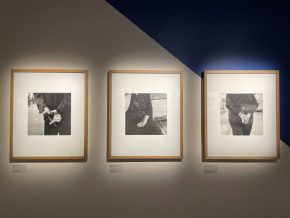NEW YORK (Reuters) – New York City’s Metropolitan Museum of Art, one of the world’s most popular museums, will start charging a fixed admission fee for out-of-state visitors rather than urge they pay a suggested donation, museum officials announced on Thursday.
The shift comes as a growing number of visitors have opted out of paying the full suggested donation, currently $25 for adults, $17 for seniors and $12 for students, Daniel Weiss, the museum’s president, told reporters.
From March 1, those suggested amounts will become mandatory for visitors who are not members and who do not live in New York State, getting them a three-day pass in return.
In 2004, 63 percent of those who came paid the full recommended price,” Weiss said. “In 2017, that is 17 percent. Effectively the policy is failing.
New Yorkers will continue to pay what they wish, so long as it is a penny or more, as will students from the neighboring states of Connecticut and New Jersey and any child under 12 years old.
The new policy will affect about 31 percent of the roughly 7 million people visiting the museum each year, Weiss said. The extra $5 million to $11 million the museum estimates this will generate will be a modest boost towards covering its annual operating budget of about $305 million.
The museum, spread across three sites in the city, is home to thousands of exhibits, from ancient Egyptian art to Renaissance paintings. The city leased the land on which the main building sits, a prime slice of Manhattan’s Central Park, in 1878 on condition that the museum be free to the public most days. The museum switched to suggested donations in the early 1970s but only updated its lease with the city to reflect this in 2013.
The lease amendment also allowed the possibility of the museum charging a compulsory entrance fee, with the city’s consent, though the museum said in 2013 it had no plans to do so.
Weiss said the museum was unique among institutions of its size around the world in that it receives neither substantial state funding, as do the museums grouped under the Smithsonian in Washington, nor relies on fixed admission prices, as venues such as the Museum of Modern Art in Manhattan do.
The city’s government, which approved the change, currently covers a little less than 10 percent of the museum’s expenses, Weiss said, but may reduce its contribution by up to $3 million in order to give more to other cultural institutions. Another 14 percent of revenue comes from donations at the door, a figure expected to rise to 16 or 17 percent under the new policy.

























Comments